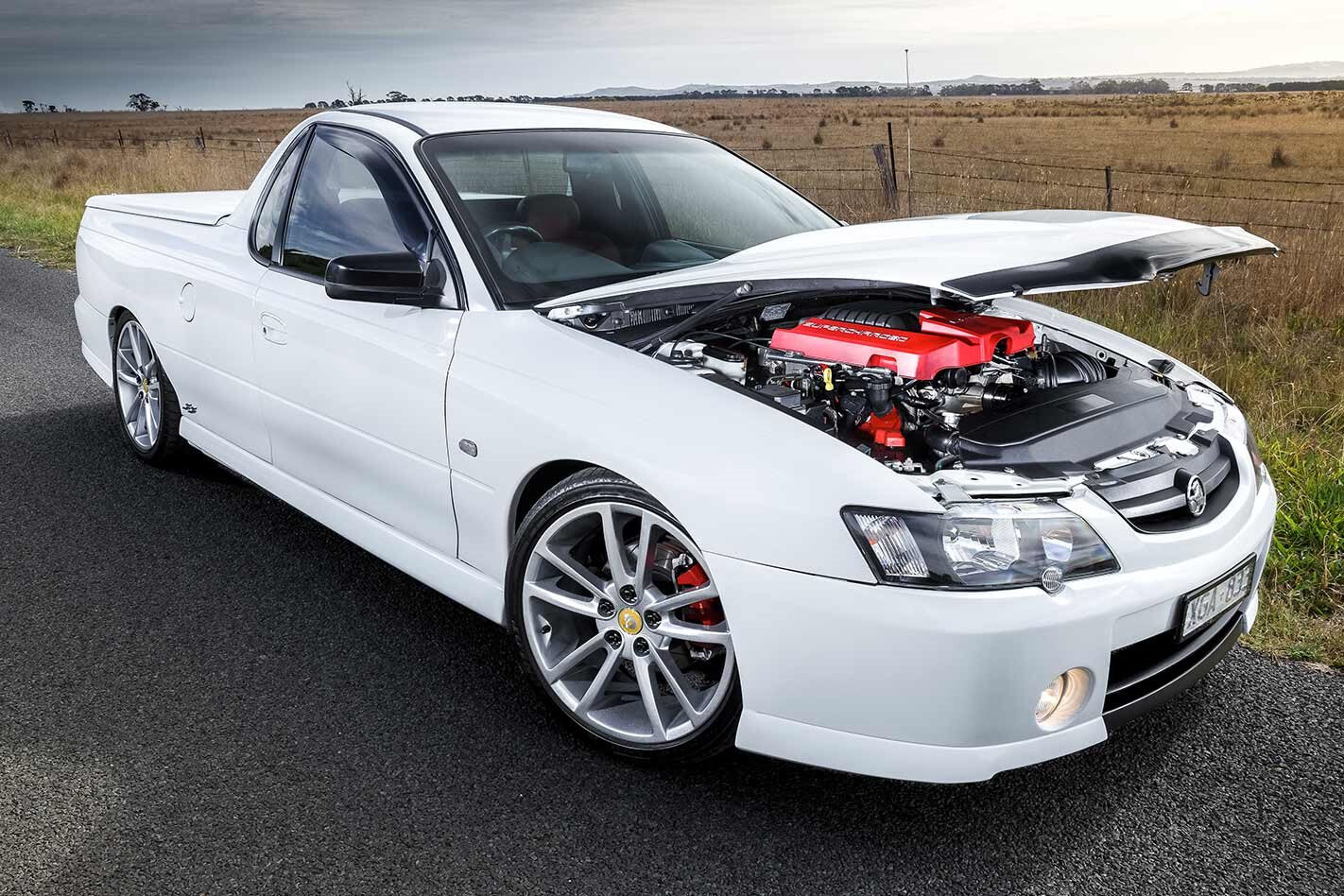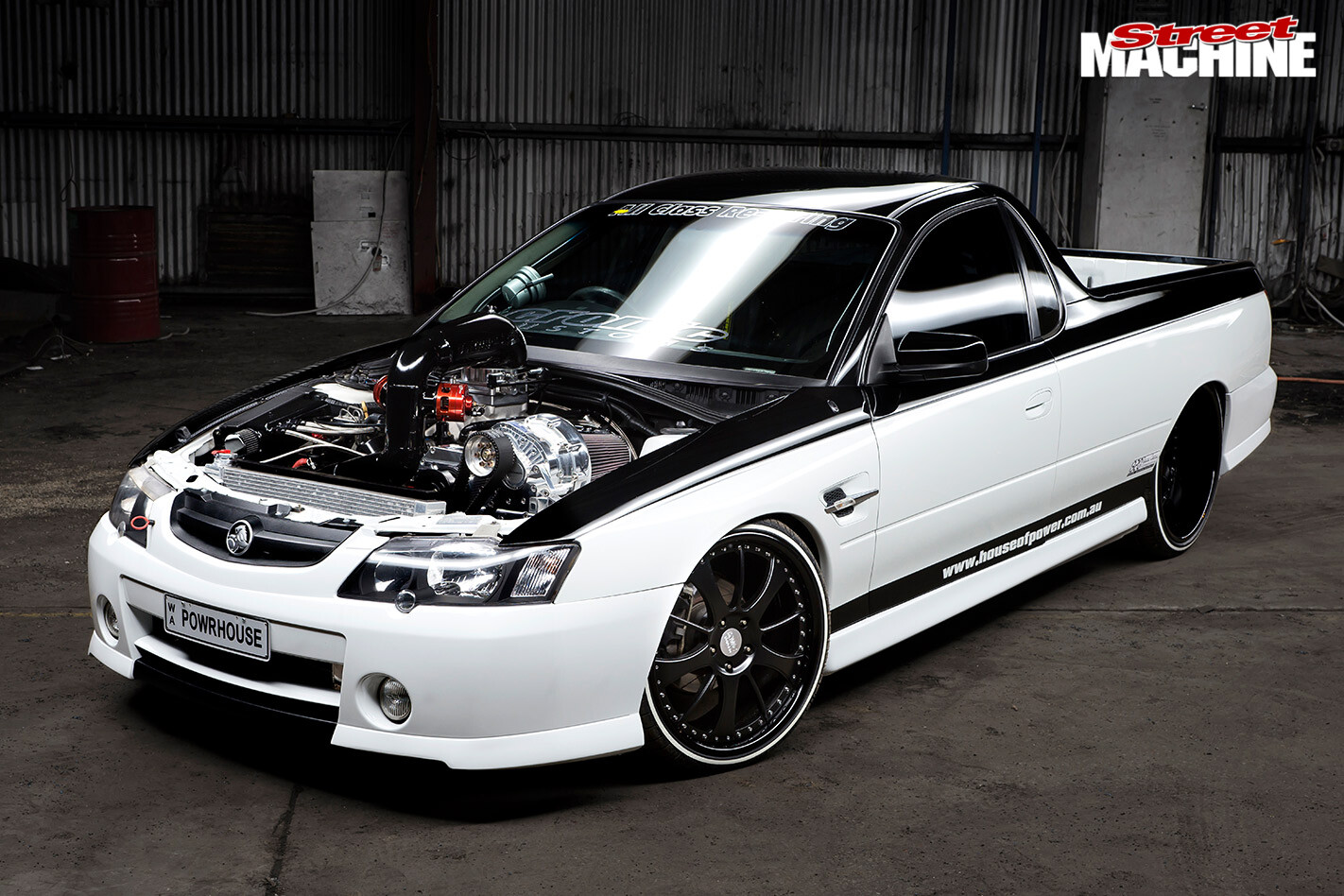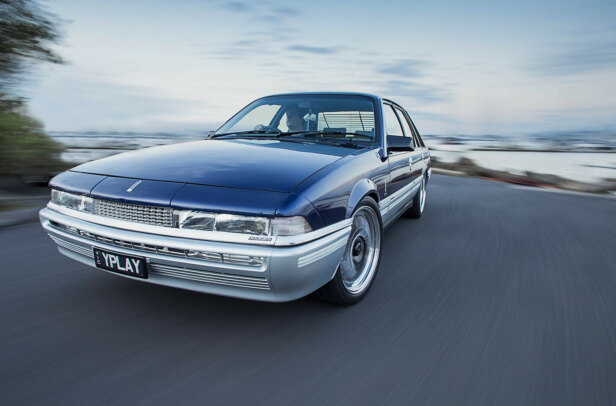This article on Joel’s VY ute was originally published in issue no.7 of Street Machine’s LSX Tuner magazine, 2018
WE FIRST saw Joel Burgess’s handiwork in issue #4 of Street Machine LSX Tuner, when we featured his immaculate pro touring VL Commodore packing an individual throttlebody-equipped LS6. That car is one hell of a weekender, but Joel wanted something more interesting to drive day-to-day.
Cue this pretty ordinary-appearing ’02 VY V8/six-speed ute. You wouldn’t believe this thing packs a blown LS1 making over 600rwhp, which Joel built at home for a tick over $12,000!
“I bought the car in November 2016 as a daily,” Joel says. “I actually had the supercharger before I had the car, as I found it super-cheap online, and then I started looking for a car afterwards.
“It was extremely rough, originally coming from the NT as a contractor’s ute, and I paid $3800. The engine had four inches of red dust over it, and the interior had more dog hair than cloth. I wasn’t going to build the engine, but I did everything it needed for the roadworthy – and it was a big list – and then, taking it in for the roadworthy, it rod-knocked.”
Joel wasn’t fazed though, freshening up the stock LS1 at home himself and adding the blower at that point.
“It’s a cheap Cadillac CTS-V one from the USA and the rotor pack was locked up when I got it, so it was really cheap,” he says. “I pulled the rotors out and had them re-Teflon-coated, found and replaced the bearings, and reset the timing.”
The biggest weak link in Joel’s set-up is the long-suffering independent diff out of a Calais. “I haven’t had the ute down the strip yet, mainly because I know the tailshaft and driveshafts aren’t going to handle it,” he says. “It’s a stock M80 LSD unit with 3.73 gears, and I have had some funny noises coming from that area of the car”
Joel then turned out his own idler and accessory drive pulley system.
“I wanted to do this whole car as a budget project, so I didn’t want to go to the extent of buying the whole LSA accessory drive, as that would have cost about $2000,” he says. “I made it all myself for about $150.”
With custom plates to convert the rectangle-port Gen IV blower to run on the stock 241 cathedral-port heads, plus a spare Harrop water-to-air intercooler, Joel put a heavy-duty clutch in the ute and got the stock LS1 PCM tuned. It made a healthy 339rwkW (454.6rwhp in the old money) at 3250rpm, which was enough to entice him to take it to a street meet at Calder Park.
It was here Joel managed to grenade the clutch assembly so badly it destroyed his motor and transmission. This led to the current engine set-up and new auto transmission.
“When the clutch let go it cracked the block, destroyed the T56, and sent the flywheel through the floor,” he says. “It made a mess! So I got the current block from a mate’s burnout car and used the stock pistons I had spare from my VL’s engine build.”
Flowcraft handled the machine work, while Joel put the motor together, starting with Clevite bearings and Hastings rings, with the spare LS6 slugs getting the nod. Made out of M142 aluminium alloy, they employ a slightly different shape to the stock LS1 pistons, and are apparently a high-performance item designed to withstand the race-style use the LS6-equipped C5 Corvette Z06 was intended for.
The standard cathedral-port 241 head castings have been retained, as have the matching valves and pushrods, though the valve springs have been beefed up with PAC beehive units. Joel chose to improve a few areas of the 346ci short motor, opting for much tougher LS7 lifters, and an LS9 cam.
The BA Falcon-style bonnet hump was a necessary evil to clear the blower, but it is pretty much stock apart from that. “Body-wise I haven’t done much, as it was reasonably straight,” says Joel. “I have to thank Aaron for the buff and detail; it really brought the paint up!”
The cam, only offered in the 640hp supercharged C6 ZR1 Corvette (and now the HSV GTS-R W1), was part of the ultimate production Gen IV small-block, and so you’d expect it to be the best boost-ready cam that GM offers. Now available much cheaper than a complete LS9 crate motor, the LS9-spec bumpstick is proving to be the hot ticket for budget boost set-ups thanks to its 211/230 duration and 122.5° LSA. This geometry is excellent for forced-induction motors thanks to its generous cylinder fill.
However, this cam swap required navigating a couple of tricky differences between the Gen III and Gen IV motors. Thanks to the new cam using a three-bolt pattern on the snout, Joel also had to update to an LS3 front cover and LS2 cam gear.
Joel’s ute looks factory-fresh under the bonnet, with plenty of GM factory parts used to upgrade the formerly 235kW 5.7L into the 472rwkW monster it is now. Often these parts are discarded by punters wanting to upgrade to name-brand items, but they can still provide excellent performance at a bargain-basement price
“At the moment it is making 620hp at the rears with 14psi and 60lb [630cc] injectors,” Joel says. “I made my own blower overdrive pulley set-up. Originally the car made 12psi, but now I’ve gone five per cent-overdriven crank pulley to make 14psi.”
Joel bought a cheap but tough 4L80E four-speed auto out of a Chevy Silverado pick-up, and switched that into the VY.
Due to a factory recall, there was a glut of second-hand Eaton TVS1900 superchargers – previously fitted to Cadillac CTS-Vs – available cheaply online. These units were swapped out as complete supercharger assemblies, providing a bargain if you had the cojones to rebuild them
“I wanted to keep the overdrive, but I wanted the auto to be stronger than a stock 4L60E,” he explains. “The 4L80E uses pretty much the same internals for first, second, and third gears as the TH400, plus there’s also a bit less mucking around with the computer to use the 4L80 compared to a cable-driven ’box.
“I got my 4L80 as a rebuildable core for $1000, pulled it down and replaced a failed rear planetary. I then beefed the ’box up when I had it apart, so it should handle 800-900hp the way I built it.”
What makes this project really interesting is just how cheaply Joel has been able to build this 620rwhp brute. By searching for used bargain parts and building the car himself, he’s managed to buck the trend of big-horsepower builds costing a bomb.
“Initially I was hoping to build it for $10K, but as it sits it owes me $12,500. I wanted to see how far I could go with second-hand parts, or buying parts off the internet. It has been really reliable and I’ve been driving it around daily.
Joel upgraded the cabin with factory buckets from an SS, while the Hurst shifter and an HSV steering wheel are nicer to grab than the stock S-pack items – and the tiller matches the HSV Senator door trims and under-dash panel. Joel had C&N Vehicle Trimming redo the rooflining and pillar trim, as there is a custom gauge installation on the A-pillar that houses the Innovate Motorsports wideband, plus oil pressure and boost gauges
“It’s a little bit thirsty around town, but on the highway it sits around 12L/100km, and around town 14L/100km. It cruises really nicely.”
We reckon Joel has stumbled onto the perfect recipe: 620rwhp for the price of a half-decent V8 VE Commodore!
JOEL BURGESS
2002 HOLDEN VY S UTE
PAINT
Heron White
ENGINE
Brand: Holden Gen III LS1
Capacity: 5.7L/346ci
Blower: GM/Eaton TVS 1900
ECU: Stock LS1 PCM
Pistons: LS6
Cam: Gen IV LS9
Crank: Stock
Oil pump: Melling
Valve springs: PAC beehive
Fuel system: 630cc injectors, in-tank Bosch 044 pump
Cooling: Custom shroud
Exhaust: HSV manifolds, dual 3.5in stainless cat-back
TRANSMISSION
Gearbox: Chevy Silverado four-speed 4L80E
Converter: B&M Holeshot
Diff: VY Calais M80 LSD IRS, 3.73:1 gears
SUSPENSION & BRAKES
Front suspension: King Super Low springs, Monroe shocks
Rear suspension: King Super Low springs, Monroe shocks
Chassis: Adjustable camber kit (r)
Brakes: Stock (f & r)
WHEELS & TYRES
Rims: VE Commodore Supersport; 19×8 (f), 19×9 (r)
Rubber: Dunlop SP Sport (f & r)




Comments